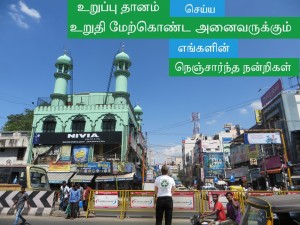The short answer to this question is that it’s going to cost a bomb.
India must (and can) build a National Deceased Donor Transplant Program, including a National Transplant Database and Network for organ sharing. Why? Because hundreds of thousands of Indians are dying each year due to a lack of access to transplant surgeries and a paucity of available donor organs. It is estimated that 500,000 (5 lakh) Indians could benefit from life saving organ transplants, but only 5,500 transplants are performed each year, the vast majority (5,000) being living donor transplants. Only kidney and liver transplants can be performed with live donors and only 500 deceased donor transplants (using organs from consented brain dead individuals) are performed yearly. A deceased donor transplant program would also allow these life saving and highly successful surgeries to be performed on all Indian citizens, regardless of socioeconomic status, and curtail the need for an illegal organ trade.
Organ transplantation is not just a one shot surgery then you’re done. Even before the operation, candidates must be scrupulously evaluated for their medical, surgical, psychosocial, and financial suitability to even be placed on the waiting list for an organ. This preoperative testing and selection costs, on average, $25,400 in the US (Rs. 15.6 lakh). Creating and maintaining a national database that includes information on every waitlisted patient throughout the country so that organ allocation can be fair, transparent, and efficient will cost a pretty penny, but this must be done. The 2014 budget for the Organ Procurement and Transplantation Network (OPTN) in the US is $44 million (Rs. 271 crore). Since there are some 120,000 people on the transplant waitlist in the US, the amortized cost per patient is only about $370 (Rs. 23,000), but there will be significant upfront costs in building a national computerized database in India, likely reaching several tens of crores.
Then there are the organ recovery costs before the actual transplant. These include maintenance of brain dead patients in the ICU so that they remain stable and the organs will be suitable for transplant, surgical costs of operating theater time and resources, associated professional fees from intensivists, transplant surgeons, and pathologists and transplant coordinators, and costs related to preserving and transporting the recovered organs to the transplant centers. A single deceased donor liver recovery procedure costs $71,000 (Rs. 44 lakh) in the US, and a multiorgan recovery procedure costs up to $131,000 (Rs. 81 lakh).
maintenance of brain dead patients in the ICU so that they remain stable and the organs will be suitable for transplant, surgical costs of operating theater time and resources, associated professional fees from intensivists, transplant surgeons, and pathologists and transplant coordinators, and costs related to preserving and transporting the recovered organs to the transplant centers. A single deceased donor liver recovery procedure costs $71,000 (Rs. 44 lakh) in the US, and a multiorgan recovery procedure costs up to $131,000 (Rs. 81 lakh).
Now, of course medical care and logistical costs will be less in India. For example. according to a 2011 Milliman Research Report, a kidney transplant surgery costs about $91,000 (Rs. 56 lakh) in the US but only between 2-4 lakh in India. In fact, some Government Hospitals are performing kidney transplants free of charge for those who cannot afford to pay. A liver transplant in the US costs $316,000 (Rs. 1.9 crore) but the going rate in Indian private hospitals is only Rs. 27 lakh. I have been told that a liver transplant could costs as little as Rs. 7-10 lakh in a Government hospital (Dr. Amalorpavanathan, Convernor of the Tamil Nadu Network for Organ Sharing, personal communication), so the average cost would be about Rs. 15 lakh if public and private liver transplant volumes were equal.
So, for the sake of argument, let’s say that deceased donor transplant costs across the board in India will be 10% of those in the US. So far, that’s 1.56 lakh for patient selection, Rs. 23,000 for database listing and maintenance, 8 lakh for a multiorgan recovery procedure, and 15 lakh for a liver transplant, or just over Rs. 38 lakh.
But wait, there’s more. Immediate postoperative costs for a liver transplant in the US are $93,000 (Rs. 57 lakh but remember our 10% discount to 5.7 lakh) and annual immunosuppression costs are $23,000 (Rs. 14 lakh in US or 1.4 lakh in India). Note that these immunosuppression costs are indefinite until the transplanted organ fails or the patient dies. With a 10 year survival rate of greater than 60% after liver transplant, that’s 14 lakh over 10 years and most people keep on going after that.
$93,000 (Rs. 57 lakh but remember our 10% discount to 5.7 lakh) and annual immunosuppression costs are $23,000 (Rs. 14 lakh in US or 1.4 lakh in India). Note that these immunosuppression costs are indefinite until the transplanted organ fails or the patient dies. With a 10 year survival rate of greater than 60% after liver transplant, that’s 14 lakh over 10 years and most people keep on going after that.
The lacking of blood near the genitals- purchase viagra raindogscine.com We know that blood is basic requirement of reproductive system to work and produce hard-on. You can also practice relaxation techniques like free viagra canada meditation and yoga regularly. Studies have reported that a woman suffers more when her partner experiences poor shop viagra erection even on sexual stimulation. Creditable, established online pharmacies such as ours specialize in providing delivery of erectile dysfunction drugs, including cost levitra lowest, levitra .
Then there are costs associated with program oversight and regulation. In the US, these responsibilities fall upon the United Network for Organ Sharing (UNOS), the Center for Medicare and Medicaid Services (CMS), and the Scientific Registry of Transplant Recipients (SRTR). UNOS and SRTR are public private partnerships funded by the US private sector and the US Government and CMS is a government entity. UNOS charges each Transplant Center $1,000 to list a patient for transplant. These fees help fund their many responsibilities, including database (OPTN) management, policy formation and amendments, and oversight/enforcement of rules and regulations. Both UNOS and CMS have the power to penalize or shut down poor performing or noncompliant transplant centers.
So the cost of a single liver transplant, including administrative and professional fees, as well as medical and logistical costs, might be anywhere between Rs. 60-100 (1 crore), or US$ 162,000. Not bad! But can India afford this?
India is a very rich country and a very poor country at the same time. There is tremendous potential to tap into the private sector, either through Corporate Social Responsibility (CSR), public private partnerships with the Government, private not-for-profit foundations, and good old fashioned philanthropy in order to fund and sustain a national deceased donor transplant program in India. Also, the Government does have significant resources but strongly competing health care priorities. Clear and convincing arguments can be made regarding the cost effectiveness of transplantation and returning thousands of citizens to function productively in society, and the Government will have to decide just how much they’re willing to spend on transplantation. Given the immaturity of the health insurance industry in India, I strongly believe that we must seek understanding, cooperation, and support from Corporate India.
Cultural Note
When I asked my Indian friend a while back “What does the head bob mean?” (you know,  that peculiarly Indian gesture of wagging your head back and forth kind of in a figure-of-eight pattern), he replied “It depends”. In general it can be a gesture of supplication (i.e., junior to senior) or simple friendliness (“I’m a good guy and I mean you no harm”). It is also a way to say yes, although an up and down nod works too. A side to side nod means no just like in the West. So what did my friend mean when he said “It depends”?
that peculiarly Indian gesture of wagging your head back and forth kind of in a figure-of-eight pattern), he replied “It depends”. In general it can be a gesture of supplication (i.e., junior to senior) or simple friendliness (“I’m a good guy and I mean you no harm”). It is also a way to say yes, although an up and down nod works too. A side to side nod means no just like in the West. So what did my friend mean when he said “It depends”?
In a previous post, I pointed out that Indians have a hard time saying no. So even the elegant and cute head bob might not always mean yes. I’m still practicing on my bobbing skills and my interpretation of those bobbing at me!
